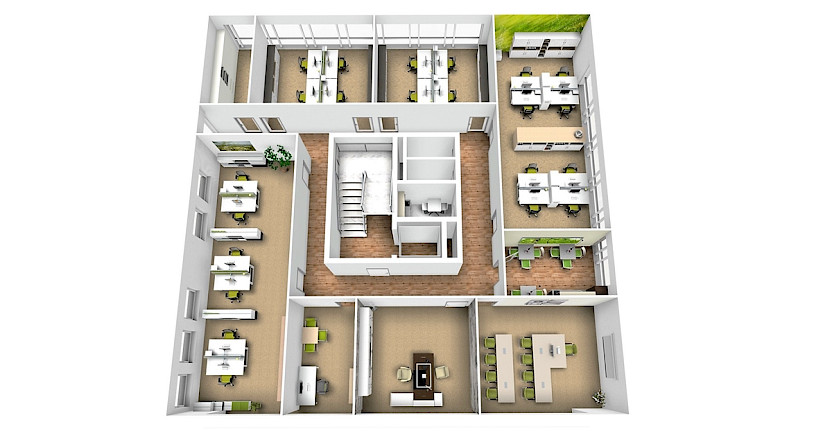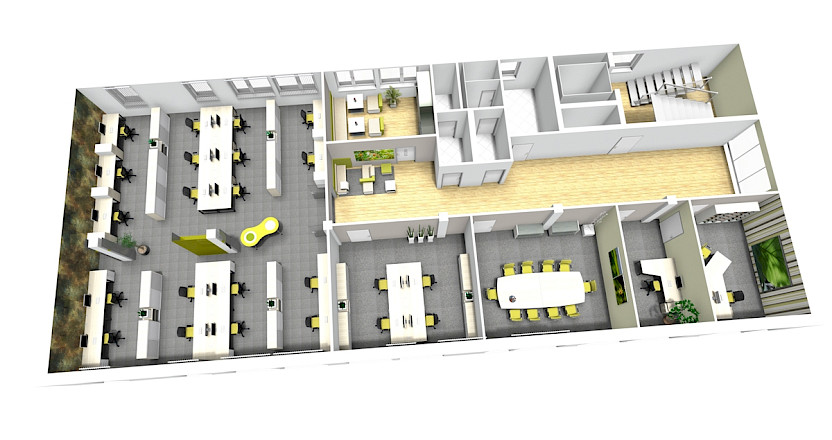“Group offices are window-facing units designed to accommodate up to 25 desk or screen workstations, clearly separated from each other using partitions or flexible room division systems.” (Definition according to ASR A1.2)
Group or team offices are often occupied by entire organisational units. They are particularly suitable for departments where close coordination among staff is essential. Since it is only partially possible to create effective acoustic separation between workstations – or doing so would require significantly more space – group offices are only partially suitable for concentrated individual work.



Advantages of Group Offices
- Close collaboration within teams or departments is possible
- More flexibility in organising work compared to smaller office units
- Greater adaptability for needs-based redesign
Disadvantages of Group Offices
- Acoustic optimisation requires relatively high effort
- Concentrated work is often only possible to a limited extent
- Individual control of lighting and temperature is only partially possible
According to ASR A1.2, only rooms may be used that provide at least 8 m² for the first workstation and a minimum of 6 m² for each additional workstation. The actual space requirements may be significantly higher – see section on space planning.
In addition, a minimum air volume of 12 m³ per employee must be ensured.
(Note: These requirements do not apply to meeting or training rooms.)
Our tip: The separation of workstation groups mentioned in ASR A1.2 can also be achieved using storage units.
The cover image of this article is taken from the showroom of the office furniture brand OKA.





